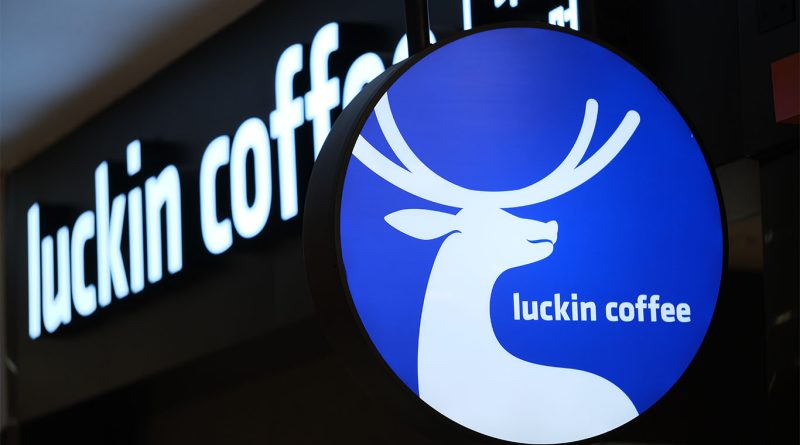Chinese coffee giant Luckin Coffee opens first US stores in New York
Subscribe to our free newsletter today to keep up to date with the latest food industry news.
When Luckin Coffee opened its first US store in New York City this week, it marked a significant shift in the global coffee industry. As China’s largest coffee chain by store count, Luckin is widely known for its app-based ordering and aggressive pricing in its home market. Its arrival on American soil signals the start of what could be a competitive shake-up for Starbucks and other major players entrenched in the US coffee landscape.
The timing is strategic. Coffee consumption continues to grow across North America, with the US market projected to reach 50 billion dollars by 2028, according to Grand View Research. With more consumers seeking affordable, convenient alternatives to traditional café experiences, Luckin’s expansion taps directly into this demand.
Luckin Coffee’s business model and strategy
Unlike traditional coffee chains, Luckin operates on a tech-forward model that prioritizes efficiency and affordability. The company relies heavily on mobile ordering through its proprietary app, which handles everything from menu browsing to payment and rewards. This system enables Luckin to keep overhead costs low and serve a high volume of customers quickly.
The stores themselves often adopt a minimalist, grab-and-go format, minimizing the need for cashiers or elaborate seating. This model aligns well with urban centers where speed and convenience outweigh the need for café ambiance. In China, this approach helped Luckin become a daily staple for millions, especially among younger, digitally fluent consumers.
The US launch: details and initial reception
Luckin’s first US store opened on Fifth Avenue in Manhattan, with another location planned in Flushing, Queens, an area with a large Chinese community. Early promotions included discounted cups and free drinks through the Luckin app to entice first-time visitors.
Initial reactions have been mixed but largely positive. Customers cite affordable prices, a medium latte costs around 40 percent less than the same drink at Starbucks, and the ease of ordering through the app. For many, Luckin’s presence offers a taste of China’s fast-paced, tech-enabled retail culture.
Competitive landscape: Luckin vs. Starbucks
Starbucks, with its deep brand loyalty and more than 16,000 US stores, remains a formidable competitor. However, Luckin’s entry illustrates how consumer tastes are shifting. Younger demographics increasingly value speed, mobile-first convenience, and budget-friendly options. Luckin’s competitive pricing could appeal to cost-conscious urban consumers who still want premium coffee but without the premium markup.
Industry analysts will be watching to see if Luckin can maintain its competitive edge. Unlike in China, where the company expanded rapidly before running into financial scandals, the US market will test whether Luckin can execute its playbook sustainably in a mature, crowded landscape.
Despite its promise, Luckin faces hurdles. US consumers are accustomed to using apps for food orders, but the brand’s relative obscurity could slow adoption outside communities familiar with its Chinese roots. Navigating local regulations, labor costs, and high urban rents will require careful strategy.
Still, if Luckin can replicate its tech-driven efficiency and value proposition, it may carve out a meaningful share of the US market. Its expansion could also prompt established players like Starbucks and Dunkin’ to refine their pricing and digital offerings further.
Sources:
